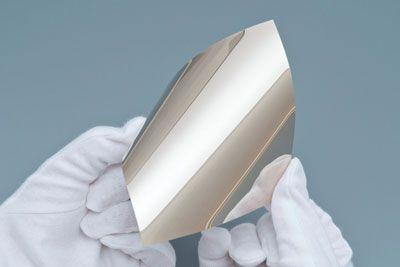 Tanaka Precious Metals has technology to wiring developed from nanosilver for the production of flexible touch displays with high image quality on film substrates. A new nanosilver ink, which can be sintered at as little as 70 °C, is suitable both for printing invisible circuit paths on plastics and for producing flexible metal films for etching using the ITO process.
Tanaka Precious Metals has technology to wiring developed from nanosilver for the production of flexible touch displays with high image quality on film substrates. A new nanosilver ink, which can be sintered at as little as 70 °C, is suitable both for printing invisible circuit paths on plastics and for producing flexible metal films for etching using the ITO process.
They have been talking about them for years, but they can not be bought yet: we are talking about smartphones with flexible displays. 2020, maybe even 2019 are the first models to appear. Until then, there are still some technological hurdles to overcome. The highest hurdle: Touch-sensitive touch displays that are also flexible, and with the same or better optical properties. With the expensive ITO technology used today, in which traces are etched into a glass substrate, a display would break immediately upon bending. Two new technologies from the specialist in precious metals overcome these disadvantages and put the production of smartphones with flexible displays within reach.
![]() Metal 3D printer economically for the first time with Ehla process
Metal 3D printer economically for the first time with Ehla process
In the first technology, the conductor tracks for the touch function are printed as a fine metal mesh with an ink containing silver. Other companies have also developed metal mesh sensors, but the conductor tracks there are up to 7 µm wide and are therefore visible to the naked eye and annoying. Tanaka's process creates conductor tracks that are well under 4 µm micrometers, making them invisible to the naked eye - the image quality is higher, as is their durability. Previous printing processes only worked at temperatures above 130 °C and therefore not on heat-sensitive plastics such as PET. The manufacturer managed to reduce the temperature for sintering to 70 °C. The secret lies in the ink, which contains silver nanoparticles measuring between 10 and 100 nm in high concentration and in a novel processing process. The technology is suitable for fast and cost-effective roll-to-roll processes in which displays are printed on film strips.
A second technology is also provided by the display manufacturers, who want to continue to use the ITO process to avoid major investments. The nano-silver ink is used here to produce large-area silver films that can be etched using ITO processes - but on flexible substrates, which are necessary for flexible displays.